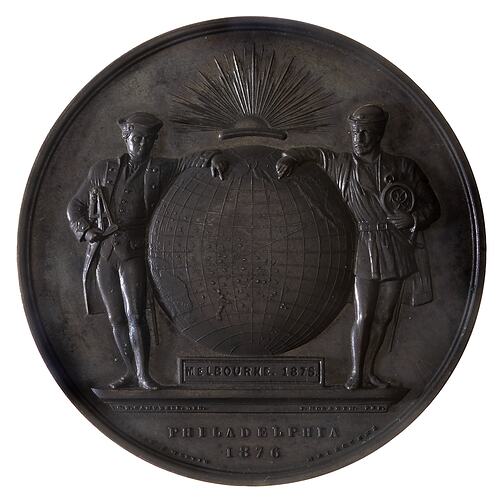Oswald Rose Campbell was born in 1820 in Jersey, Channel Islands. At the age of 19 he began his study at the Trustees' Academy in Edinburgh, and in 1842 moved to London to study at the Royal Academy School. In London he became a member of the National Institution of Artists. He continued his studies at the Liverpool Academy and the Royal Hibernian Academy in Dublin. He exhibited twice at the Royal Academy in London.
Campbell married Elanor Scott, and the couple soon produced the first of nine children. They decided to emigrate to Australia, and arrived in Melbourne in October 1852. Campbell painted in Melbourne before moving to Sydney in early 1855. He returned to Melbourne in 1864, at the age of 44, and settled first in East Melbourne, before moving to Punt Road, Windsor. He continued to paint and exhibit, and in 1870 became the first president of the newly-founded Victorian Academy of Arts. At its first exhibition he exhibited several of his own works, including oils with moral-biblical themes and a model for a seal of the public library. He retired from his position as president in 1875, after a disagreement with the council of the Academy. In the same year his design was used for a medal for the Victorian Intercolonial Exhibition and Philadelphia Centennial Exhibition (NU 20277, etc). Campbell won an award himself for pictures at the Philadelphia Centennial Exhibition.
In 1876 Campbell was appointed drawing-master for the School of Design, having successfully argued that he had been drawing on wood for the past 12 years, principally for illustrated newspapers. He retained the position for nine years, earning a reputation as a rather dictatorial and inflexible leader. In 1879-80 he became embroiled in a controversy with a group of students, led by Tom Roberts, Frederick McCubbin and Charles Douglas Richardson. The students had arranged a life class on Saturday afternoons, which Campbell opposed on the grounds that they lacked the skill for this type of work. He threatened them with dismissal, and they appealed to the trustees and won. Campbell was called to explain his actions, and suggested that the students had abused the freedom granted them. The majority of his pupils hastened to support him, arguing in favour of his teaching methods. He was reinstated, but the rebel students won the right to a life class that Campbell himself had to teach.
Two years later Cambell was again embroiled in controversy. This time umbrage was taken at his insistence that students pay fees directly to him, rather than paying a general fee to cover all tuition. By this time his health was beginning to fail, and the trustees hastened to end his tenure. He was succeeded by Frederick McCubbin.
Five years later Campbell died at his house in Punt Road, Windsor, on 18 March 1887.
References:
Australian Dictionary of Biography.
More Information
-
Keywords
-
Localities
Melbourne, Victoria, Australia, Sydney, New South Wales, Australia
-
Authors
-
Article types
